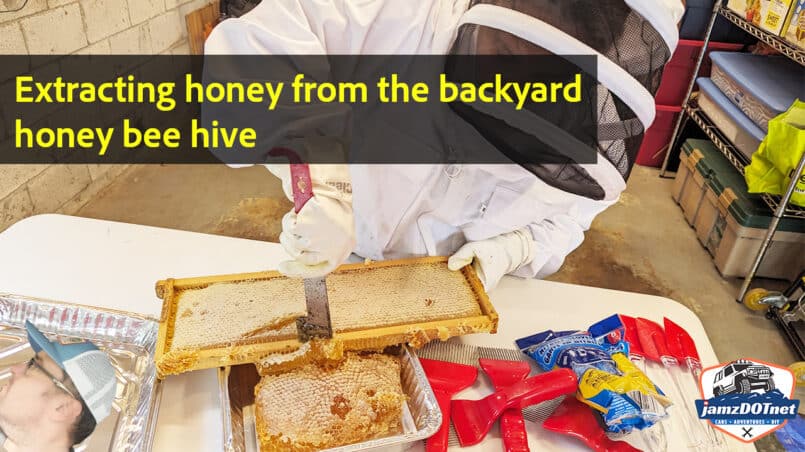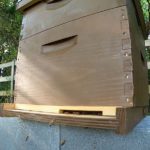This year we were able to harvest close to 3 gallons of fresh raw honey! Follow along as we remove frames from the hive and extract them into the stainless steel extractor.
Having a backyard honeybee hive can be a rewarding and fascinating hobby. Beekeeping not only provides you with fresh, local honey but also contributes to pollinator conservation and can be a source of personal satisfaction. Here’s some essential information on having a backyard honeybee hive:
- Equipment: Before starting, you’ll need to invest in some basic beekeeping equipment, including hive boxes, frames, a smoker, a hive tool, a beekeeping suit, gloves, and a veil. The type and number of hives will depend on your goals and space available.
- Location: Choose a suitable location for your hive. It should receive adequate sunlight (at least 6 hours a day), be sheltered from strong winds, and have a source of fresh water nearby for the bees. Ensure that your hive is not in a high-traffic area to minimize disturbances to both the bees and yourself.
- Bee Species: The most common honeybee species used in beekeeping is Apis mellifera. You can purchase a package of bees or a nucleus colony (nuc) to start your hive. Another option is to capture a swarm if one is available in your area.
- Hive Management: Beekeeping requires regular hive inspections and management. You’ll need to monitor the hive’s health, check for diseases and pests, and ensure the bees have enough food. This may involve feeding them sugar syrup or pollen patties if nectar and pollen sources are scarce.
- Honey Production: The primary motivation for many backyard beekeepers is honey production. Bees collect nectar from flowers, convert it into honey, and store it in the frames within the hive. Harvesting honey involves removing frames, extracting the honey, and returning the frames to the hive.
- Pollination: Besides honey, honeybees are crucial pollinators. By keeping a hive, you’ll help pollinate your garden and surrounding plants, which can increase fruit and vegetable yields.
- Bee Health: Bee diseases and pests, such as Varroa mites, Nosema, and foulbrood, can threaten your hive. Regular monitoring and proactive treatment are essential to maintain bee health.
- Safety: Bee stings can be painful and potentially dangerous for those allergic to bee venom. It’s crucial to wear protective gear and work calmly and gently around the bees to minimize the risk of stings.
- Learning: Beekeeping is a skill that requires ongoing learning and adaptation. Joining a local beekeeping club, attending workshops, and reading beekeeping literature can help you stay informed and improve your beekeeping skills.
- Legal Requirements: Check with your local government or agricultural department for any regulations or restrictions on beekeeping in your area. Some places may have zoning laws, hive placement requirements, or registration/licensing requirements.
- Neighbors and Allergies: Inform your neighbors about your beekeeping activities, especially if they have allergies to bee stings. Being a considerate beekeeper can help maintain good neighborly relations.
- Environmental Impact: Be mindful of the environmental impact of your beekeeping practices. Use organic and sustainable methods when possible to minimize harm to the local ecosystem.
Overall, having a backyard honeybee hive can be a delightful and educational experience. It connects you with nature, promotes pollinator health, and provides a source of delicious, homegrown honey. Just be prepared to invest time and effort into learning about beekeeping and maintaining your hive properly.


